350 years in the architectural evolution of Lincoln's Inn, from 1672 to 2022: 'Self-consciously Gothic, constitutional and English'
In the second of two articles, John Goodall examines the architectural development of Lincoln’s Inn from the late 17th century to the present day.

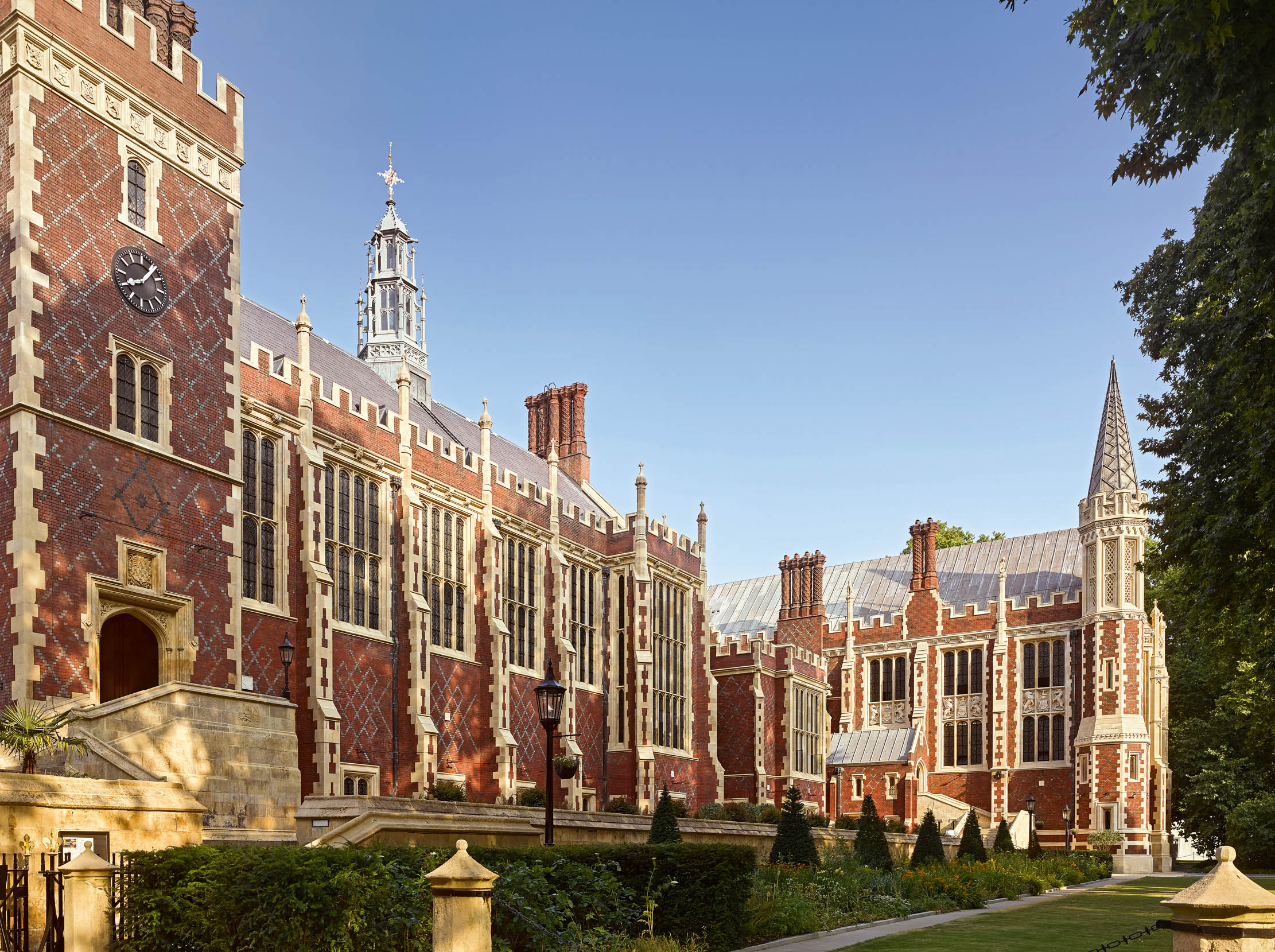
[Read part 1 of John Goodall's article on Lincoln's Inn]
On the afternoon of February 29, 1672, Charles II and a glittering company of courtiers were honourably received at Lincoln’s Inn. The occasion was proudly described in the society’s administrative chronicle, known as the Black Books, and is celebrated in a series of early 19th-century heraldic painted panels inserted in the ornate screen of the Inn’s Old Hall.
The monarch was met at the gate on Chancery Lane and proceeded to walk in the surrounding gardens to the accompaniment of trumpets and kettle drums played from the roof of one of the buildings. Members of the society then lined his route to the council chamber. From there he went on to view the chapel and, afterwards, took his seat in the hall for dinner.
The king sat under a canopy of estate — a rich overhanging cloth bearing the royal arms — at a table enclosed by a rail and was served on bended knee by members of the society. Prince Rupert, who was one of the party, shared the table but all the ‘dukes and lords, and…attendants of quality’ stood by for a period watching the King eat before they were graciously permitted to sit at tables to either side of the hall for their own repast. Throughout this ‘most liberal banquet… his Majesty’s violins’ played from the gallery above the hall screen.
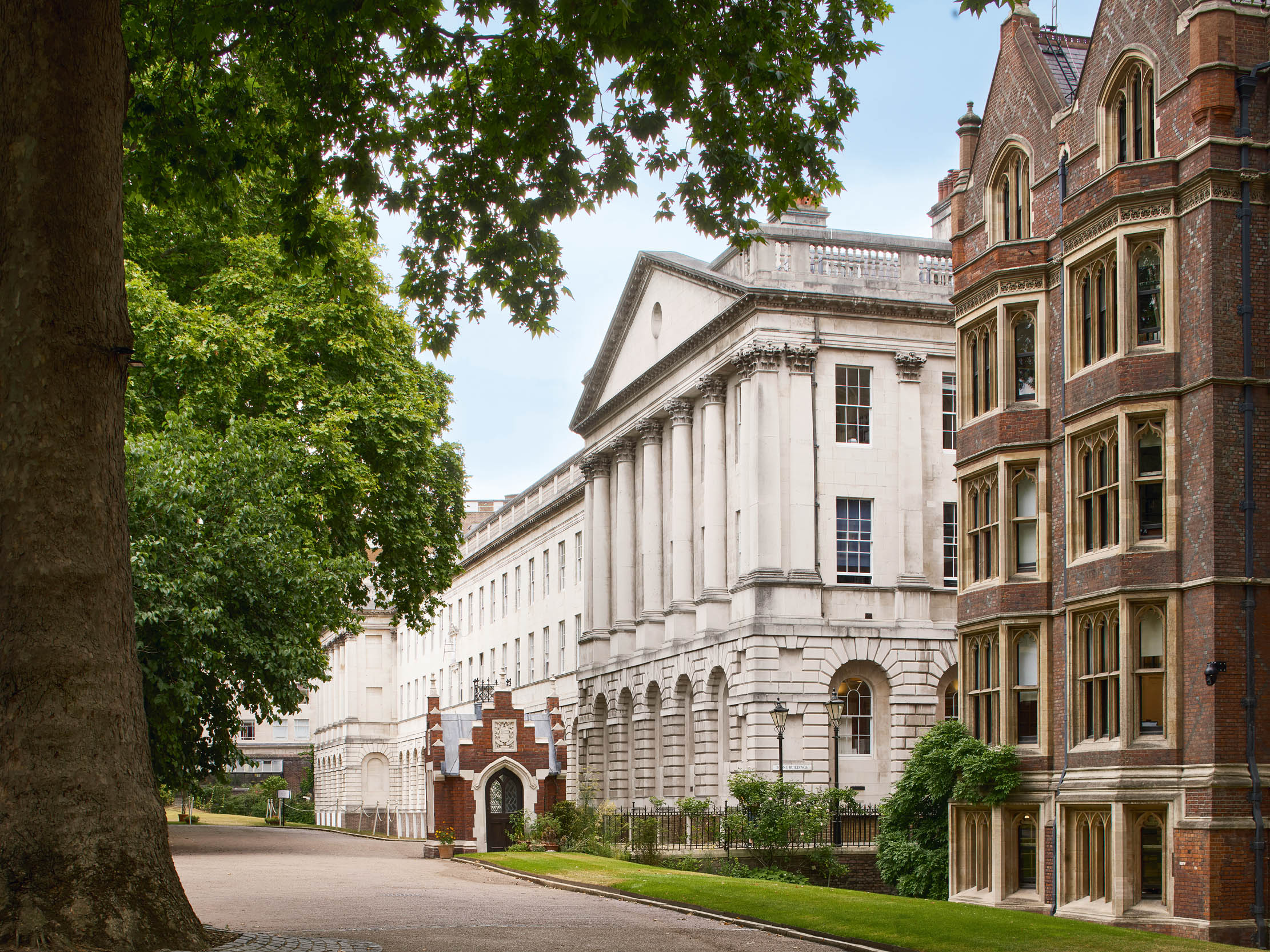
When the meal was concluded, the King called for the ‘Book of Admittance’ to the society ‘and with his own hand entered his royal name therein, most graciously condescending to make himself a member thereof.’ Such an honour, the account smugly observes, was ‘not precedented by any former King of this realm.’ His royal companions then likewise signed and, borrowing gowns, began waiting at table. Rising from the meal, the King knighted someone from every degree within the hierarchy of the society — two Benchers, a Barrister and a student — and departed.
While the events of this splendid occasion show that the hierarchy of the Inn had survived unchanged since the Middle Ages, that was not true of its underlying life. In particular, the upheavals of the Civil War in the 1640s and the Commonwealth that followed it brought the system of lectures and moots, described last week, to an end. No less importantly, London was expanding rapidly both economically and physically. Lincoln’s Inn escaped the Great Fire of 1666, but as London was rebuilt and sprawled westwards the land around it now became ripe for development.
Soon after Charles II’s visit, a proposal was made to develop Fickett’s Field, an open area immediately to the south of the Inn. The society managed to control almost every aspect of this initiative: defining the area to be built on, stipulating the position of entrances (Fig 5) and demanding that all the properties should serve as chambers for lawyers and be governed by the regulations of the Inn. The result, completed in about 1690, was Serle Court (now New Square), effectively a privately financed extension of the Inn (Fig 4).
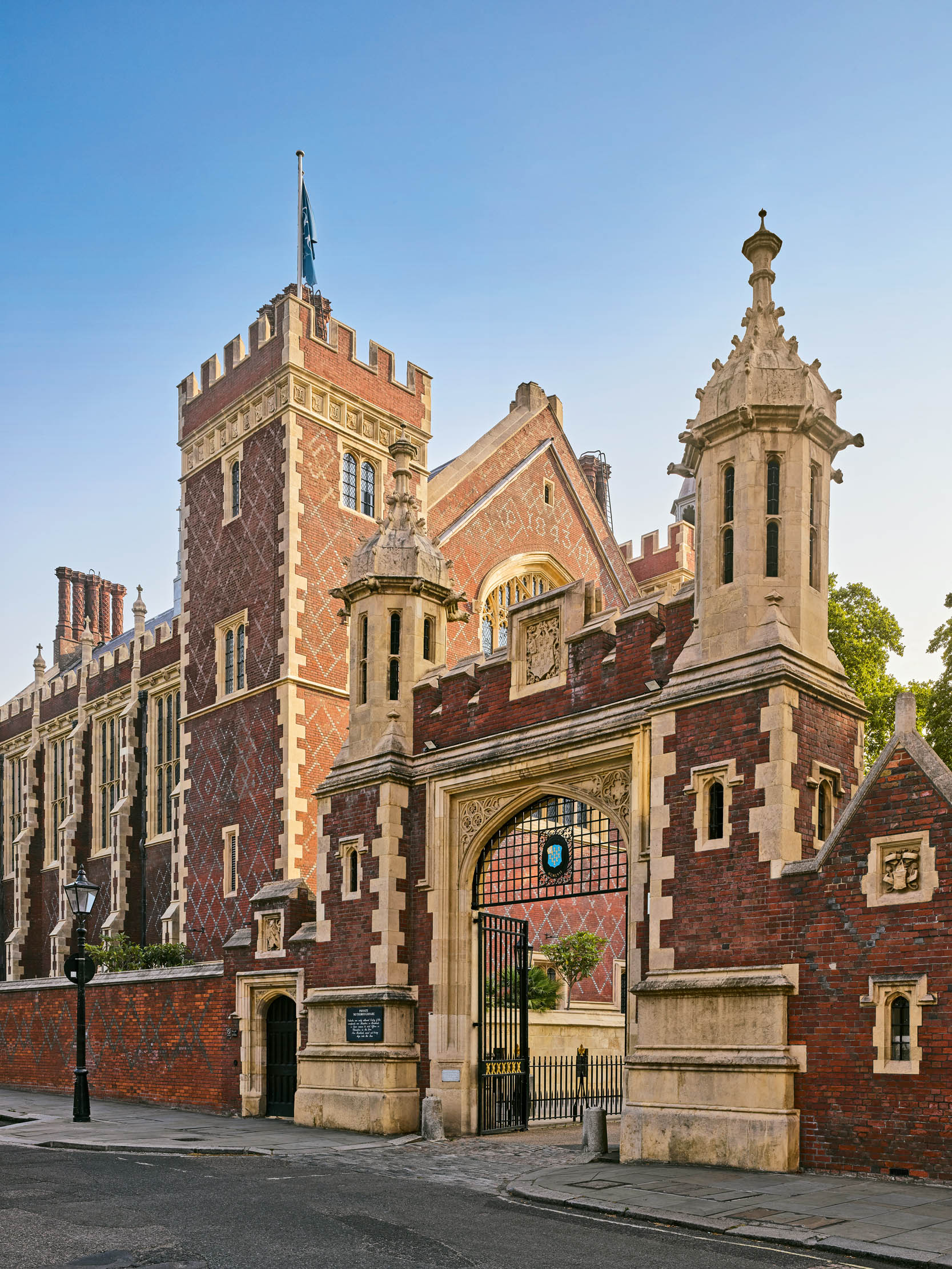
New Square provided a modern face for Lincoln’s Inn, but by the late 18th century the society aspired to more ambitious premises as a whole. In April 1771, therefore, four experienced architects — Robert Taylor, James Paine, Matthew Brettingham and Robert Adam — were directed to draw up plans accordingly.
Exquisite houses, the beauty of Nature, and how to get the most from your life, straight to your inbox.
The sheer scale of the proposed buildings is astonishing. All proposed coherent Classical redevelopments running parallel to Chancery Lane that swept away everything on the site (excepting in some cases the 17th-century chapel). Paine’s designs incorporate façades more than 800ft long, a dimension rivalling the government offices being contemplated by William Chambers from 1774 at nearby Somerset House. In the event, however, only one section of the winning proposal by Taylor, known as Stone Buildings, was erected (Fig 2).
Meanwhile, the steadily growing membership of the society struggled to exist in the buildings it had inherited. Pressure on the hall — which was being used both for dining and, intermittently, as the Court of Chancery — was particularly acute and, in 1835 the Surveyor of the Society, Mr Wigg, was asked by the governing body if it was possible to enlarge the building. Wigg thought not, but identified a spot for a new hall beside the truncated Stone Buildings. Nothing happened, however, and four years later the architect John White was in turn invited to suggest improvements.
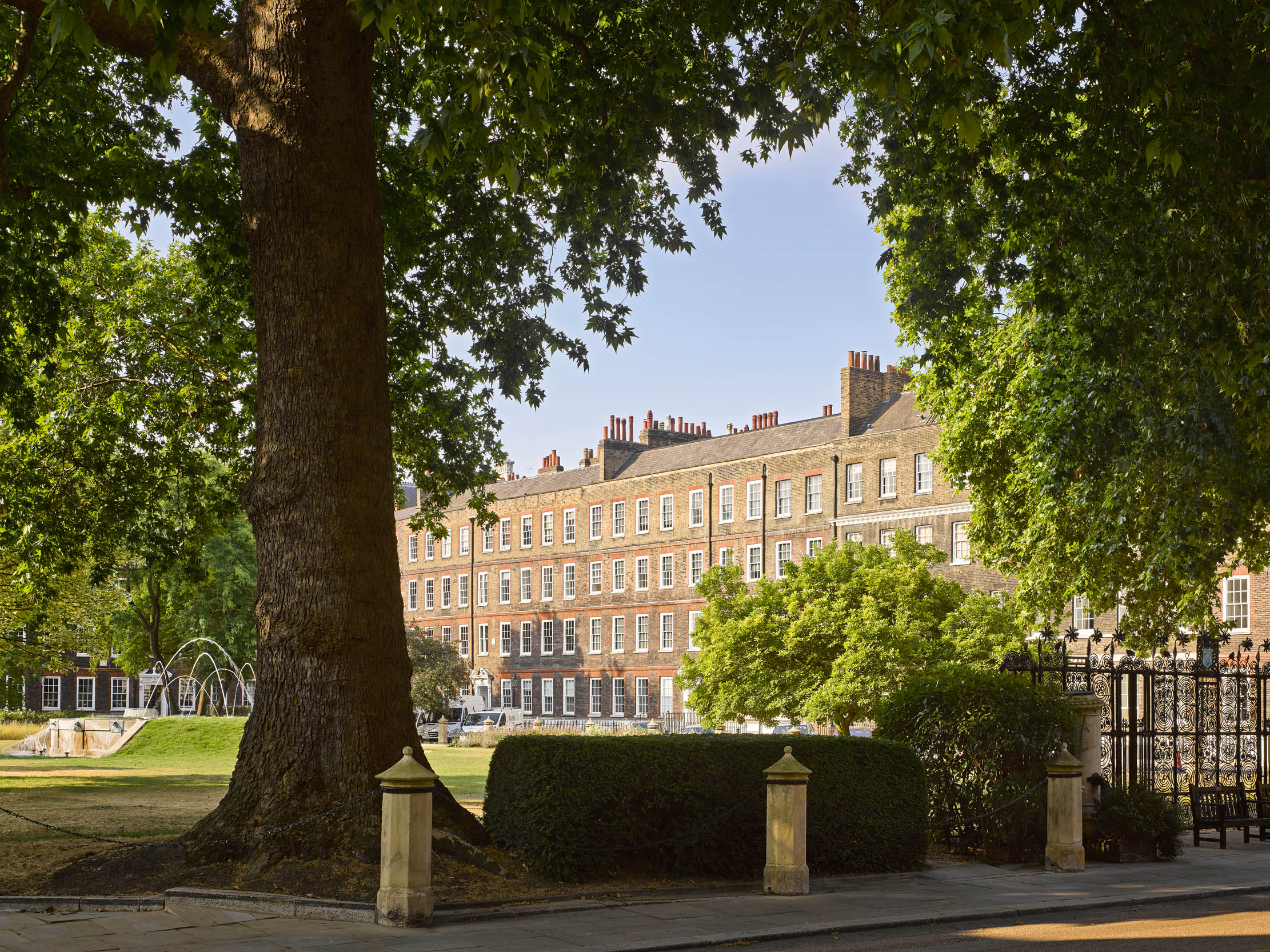
When White’s proposals were presented, the society asked a well-respected London architect resident in Holborn, Philip Hardwick, who had a particular experience in institutional building, to comment on them. ‘If economy’ Hardwick wrote with barbed disdain ‘be the principal object [of the proposals] then I am not aware that a more economical plan could be produced’. They were estimated to cost £9,385, a considerable figure worth remembering.
In January 1840, White was paid off by the society and the project passed to Hardwick. Under the scrutiny of a special committee, he gradually developed three interconnected proposals. The chief of these was a completely modern set of buildings for the society organised around a series of courtyards including courtrooms, a hall and library. At the same time, however, he planned to patch up Taylor’s incomplete Stone Buildings and also to provide temporary accommodation to serve during the works. The total cost was estimated at £47,800.
Lithographic copies of the plans were sent to each Bencher in July 1842, at which time Hardwick also recommended that his new hall and library be placed on the west side of the garden. Hardwick wanted his building to stand on this detached site because, he argued, that made it ‘unnecessary to adapt its style of architecture to any already in the Inn’. He described the style of the building as ‘collegiate’, or ‘the period towards the end of the 16th century, before the admixture of Italian architecture.’ Other contemporaries simply called it ‘Tudor’, a term that likewise implicitly underlined its Englishness.
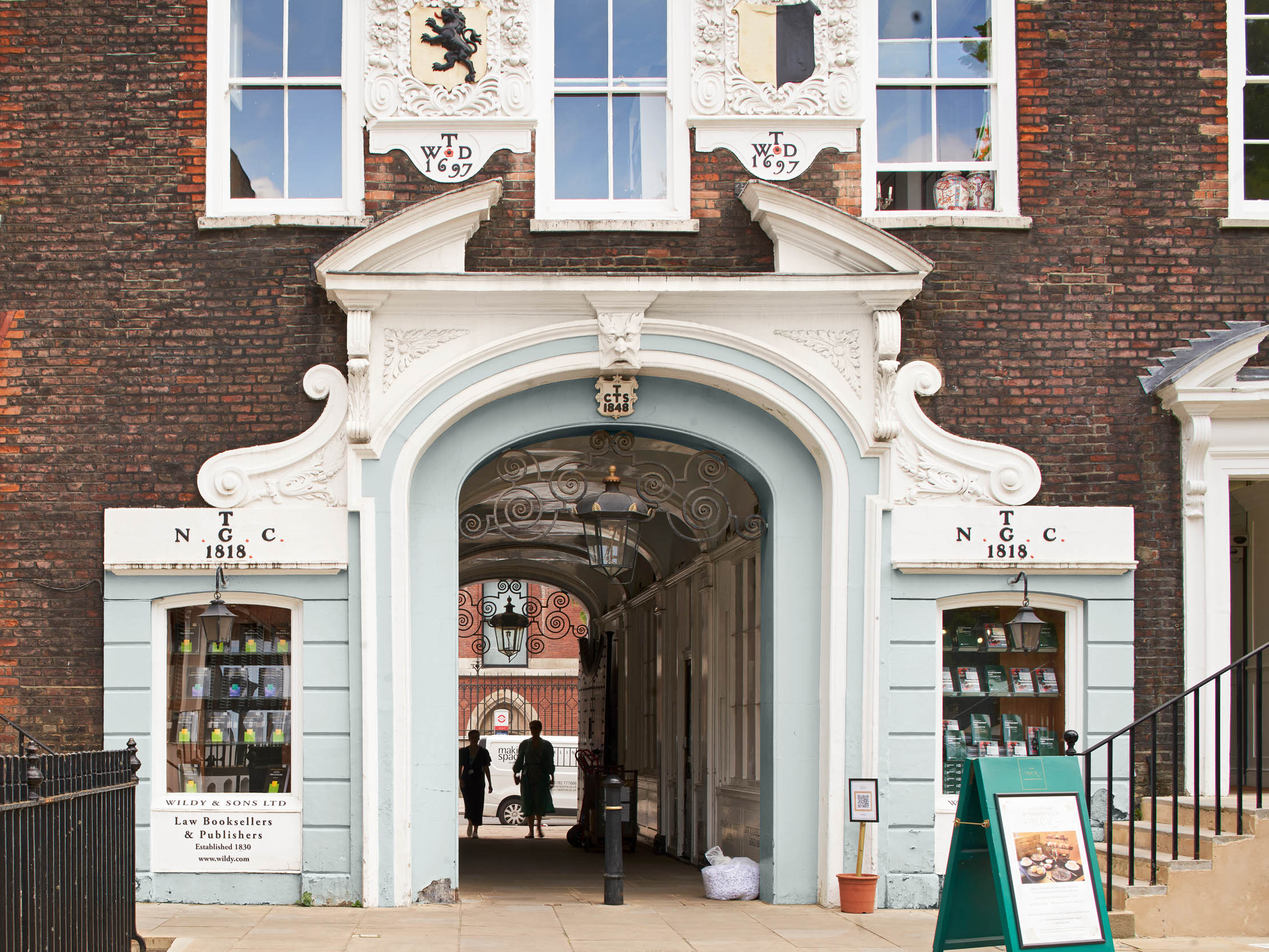
At a moment when architectural style was a subject of intense debate, this choice of ‘collegiate’ Gothic was hugely significant. Not least, in the context of ongoing and turbulent political reform, English Gothic was understood to be redolent of the nation’s unwritten constitution. This reference was very appropriate to the Inn. So too was its association with learning and communal living. Indeed, the style otherwise enjoyed popularity across the empire during the 1840s in educational foundations as far afield as Queen’s University in Belfast and Queens College in Varanasi, India.
That said, the immediate inspiration for the centrepiece of Hardwick’s new building, the great hall, was Hampton Court Palace. The palace had opened to the public in 1838 and its great hall (Country Life, October 1, 2020) was in the process of restoration as a Tudor interior. It’s from Hampton Court that the scale and form of the Hardwick’s design derives. So too does the striking external use of red brick with black diaper patterns and pale limestone from Caen and Ancaster (Fig 1).
In addition to these architectural borrowings the redevelopment of Lincoln’s Inn was framed in response to the single most ambitious architectural project underway in the capital: the Palace of Westminster, which was then being renewed after the calamitous fire of 1834. It was likewise self-consciously Gothic, constitutional and English.

There can be little doubt that the new Inn was conceived as a counterpart building, much smaller and distinct, yet echoing its ideas and of sufficient scale to beggar all architectural competition from the other Inns of Court. The connection is celebrated in two specific architectural quotations from Westminster Hall, the seat of the royal courts since the Middle Ages: the unusual towered gable of the building (Fig 3) and the structural form of its open timber roof.
The society approved the new plans and a foundation stone was laid with great ceremony — and a collection of contemporary coins — at 5:15pm on April 20, 1843. Work advanced rapidly and with such intensity that Hardwick fell ill and worked for the rest of the commission in partnership with his namesake son. The initials PH and the year 1843 were inlaid in the south gable, surely the largest and most prominent signature of an architect to be seen anywhere.
The decoration of the hall interior (Fig 8) conveyed a clear legal theme. Over the glazed screen at the low end of the hall were sculptures of legal grandees historically associated with the Inn by the chief carver working on Westminster Palace, John Thomas. There was also heraldic glass both new and reset on the same theme by Thomas Willement, who was working at Hampton Court.

A painting by Hogarth of the Apostle Paul before Felix — previously commissioned by the Inn and now in the Old Hall — originally hung above the dais. It was quickly replaced by a huge fresco Justice by G.F. Watts (1853–9). This heavily restored image makes visual play with Raphael’s School of Athens (1509–11) in the Vatican. The latter organises and portrays a pantheon of philosophers according to their views. Here the history of law-making is represented in the same way.
From the hall dais a door opens into a spacious lobby with a dramatic octagonal skylight (Fig 7). Organised around this are the Council Chamber, drawing room and library — the latter is set at right angles to the hall. Underneath these rooms is a warren of service spaces.
When Hardwick’s building was opened by Queen Victoria on October 30, 1845, it received a rapturous critical reception. The Builder described it two days later as ‘unquestionably one of the most successful buildings of our day, whether regarded as a whole… or in detail for elegance of parts, variety and completeness.’ The writer particularly praised the quality of the ironwork. The whole project cost £83,367, excluding the cost of furniture made by Caldecott of Great Russell Street.
Despite this outlay, the new library quickly proved inadequate and in 1871–2 the range was lengthened by the great Victorian architect Sir George Gilbert Scott (Fig 6). Two years after this project was completed, work began on the new Royal Courts of Justice on the Strand, signalling the permanent relocation of legal activity from Westminster to the neighbourhood of the Inns of Court.

At Lincoln’s Inn, meanwhile, attention turned to the redevelopment of the Tudor and Stuart buildings. Over the 1870s and 1880s, with much accompanying demolition, two regular courts of chambers in a Gothic idiom were developed to either side of the 1620s chapel. Over the same period the chapel was itself enlarged and cleared of immediately surrounding buildings.
This drawn-out transformation was directed by three individuals, Scott until his death in 1878, then his son John Oldrid Scott and — in the background throughout — the future Lord Grimthorpe, for a period Treasurer of the society. Lord Grimthorpe was an abrasive controversialist and amateur architect perhaps most famous today for his high-handed restoration of St Albans Abbey. He accurately described himself as ‘the only architect with whom I have never quarrelled’. He did, however, quarrel with his fellows in the Inn, who successfully blocked his plans to demolish the Tudor gatehouse.
The Inn was damaged by bombing in both World Wars and has undergone significant redevelopement since, perhaps most notably a far-reaching modernisation project undertaken by MICA Architects in 2013-9. This included the creation of the Ashworth Centre with educational facilities, the renewal of services in Hardwick’s building and an extension to the library. Lincoln’s Inn may have been founded in the Middle Ages, but it remains a flourishing institution actively engaged in training and the practice of law today.
Acknowledgements: Dunstan Speight
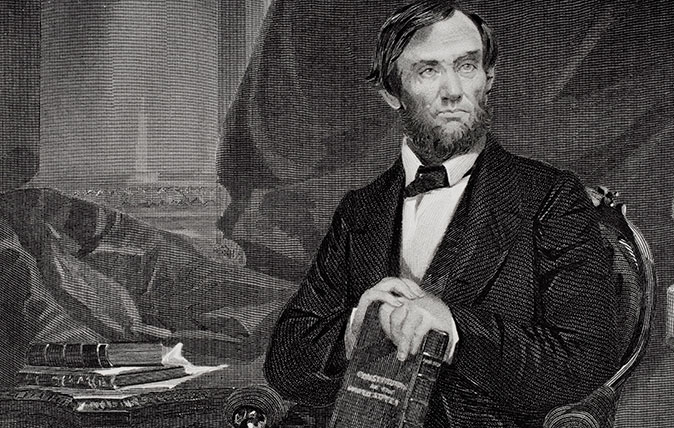
Credit: Getty
Curious Questions: How did Abraham Lincoln come to be the only US president to hold a patent?
Statesman, lawyer, fearless leader – and part-time inventor. Martin Fone looks at one of Abraham Lincoln's lesser-known talents.

John spent his childhood in Kenya, Germany, India and Yorkshire before joining Country Life in 2007, via the University of Durham. Known for his irrepressible love of castles and the Frozen soundtrack, and a laugh that lights up the lives of those around him, John also moonlights as a walking encyclopedia and is the author of several books.